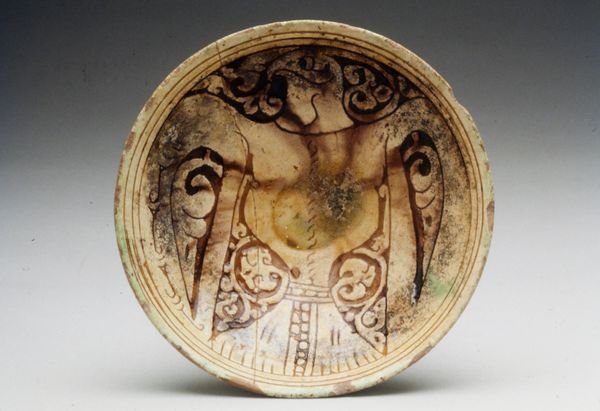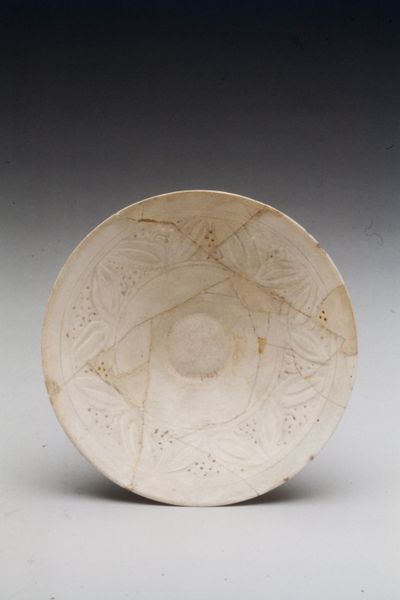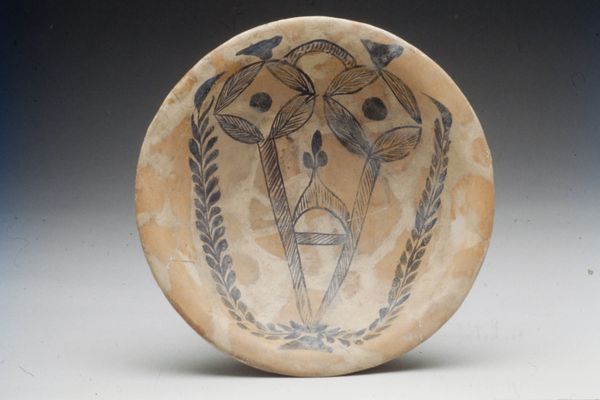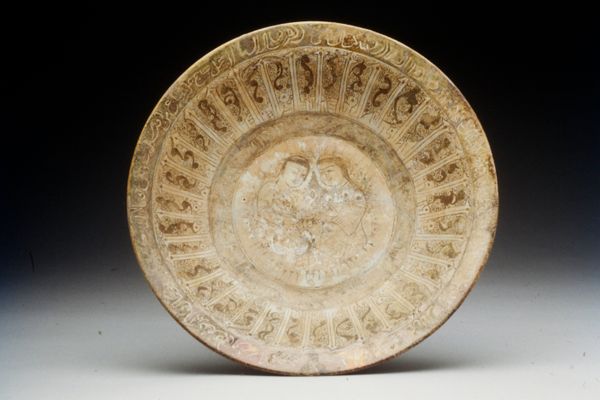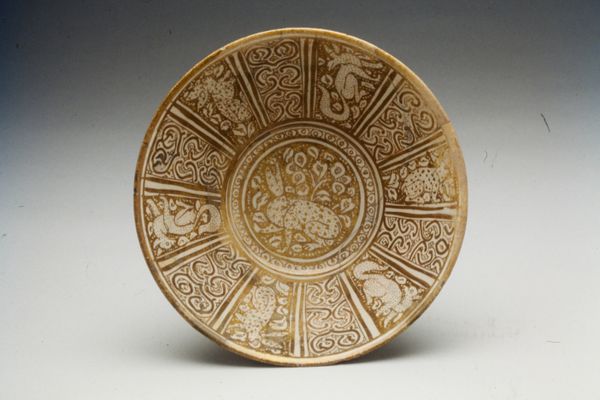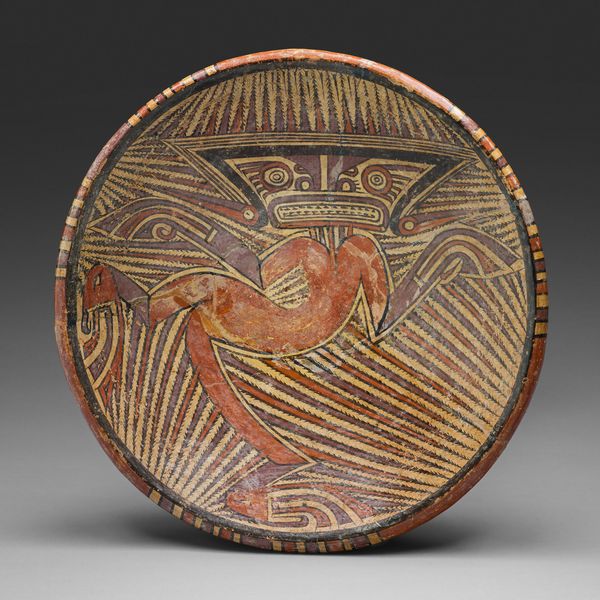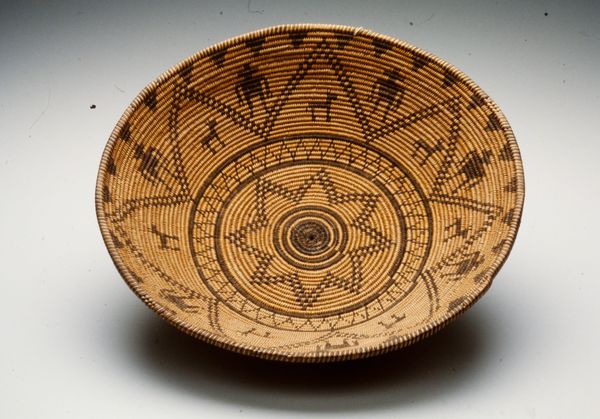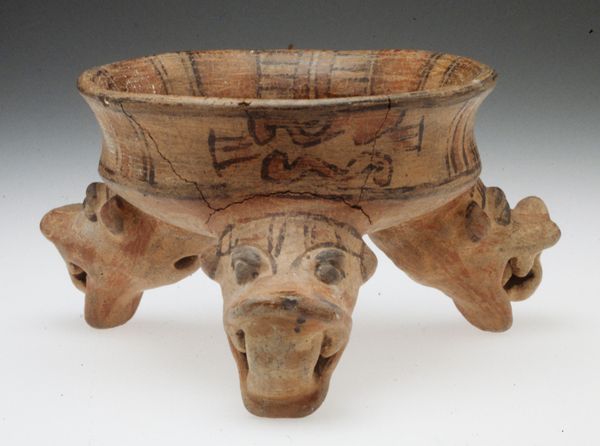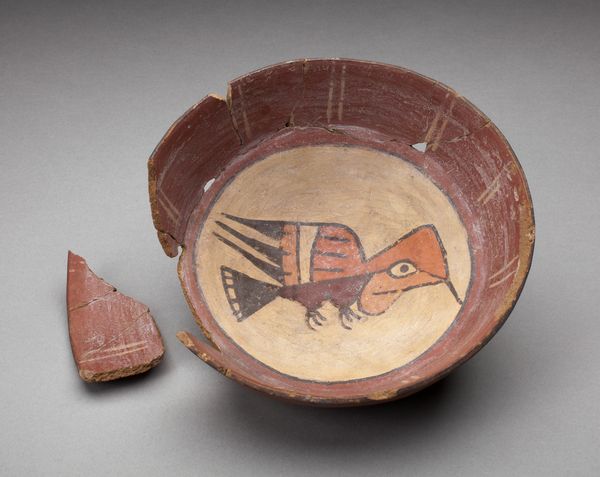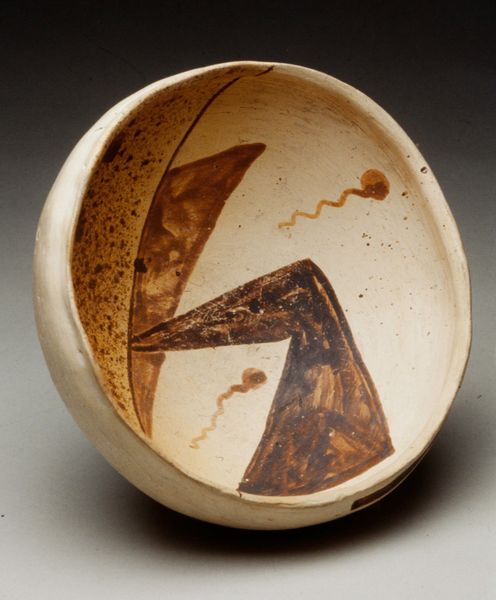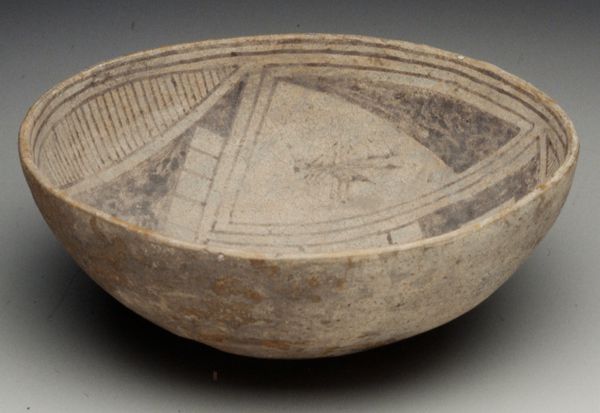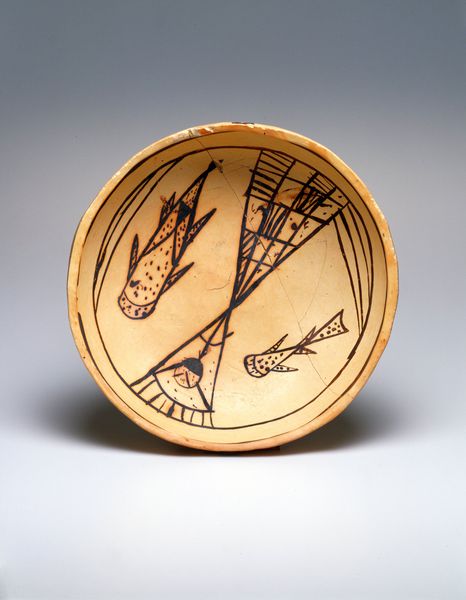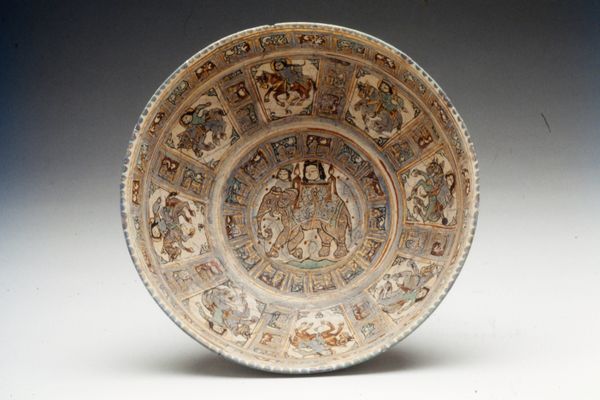
ceramic
#
medieval
#
ceramic
#
form
#
geometric
#
ceramic
#
line
#
islamic-art
Dimensions: 4 x 7 1/4 in. (10.16 x 18.42 cm)
Copyright: Public Domain
Editor: This ceramic bowl, dated to the 11th or 12th century, really strikes me with its elegant simplicity. The lines and geometric shapes create a mesmerizing pattern. How do you interpret this work within its historical context? Curator: This seemingly simple bowl speaks volumes about the interconnectedness of cultures and artistic exchange in the medieval period. Think about the social structures that allowed for the creation of luxury items. Where did the artisans come from? What communities did it serve? And what materials are being used and how does it relate to trade at the time? The geometric designs aren’t just aesthetic; they reflect a sophisticated understanding of mathematics and symbolism deeply rooted in Islamic art. Considering its original context, can this bowl act as an assertion of cultural identity? Editor: That's fascinating. I hadn't considered how much this functional object might reflect complex social and intellectual currents. Could the limited color palette also signify something specific? Curator: Precisely. Restraint in color often elevates the importance of form and line. It pushes us to consider the socio-economic implications as well, perhaps reflecting the availability or desirability of certain pigments. This very restraint could be seen as a conscious aesthetic choice, reflecting certain artistic preferences within the society. Editor: So, what begins as a simple bowl invites conversations about identity, trade, mathematical understanding, and societal aesthetics! That is remarkable. Curator: Exactly. It demonstrates how deeply embedded even seemingly mundane objects are within larger social and political structures. This helps us re-evaluate our own present day and what seemingly quotidian objects we use.
Comments
No comments
Be the first to comment and join the conversation on the ultimate creative platform.
